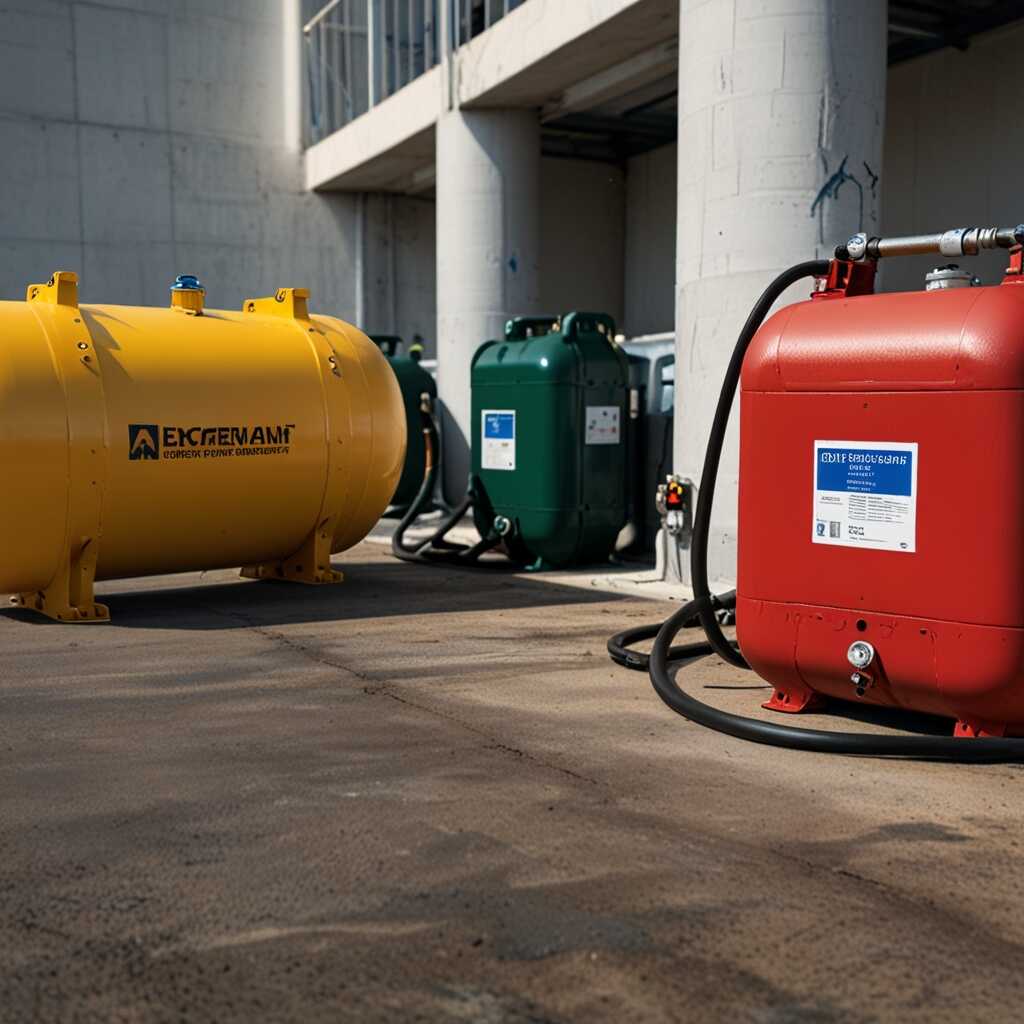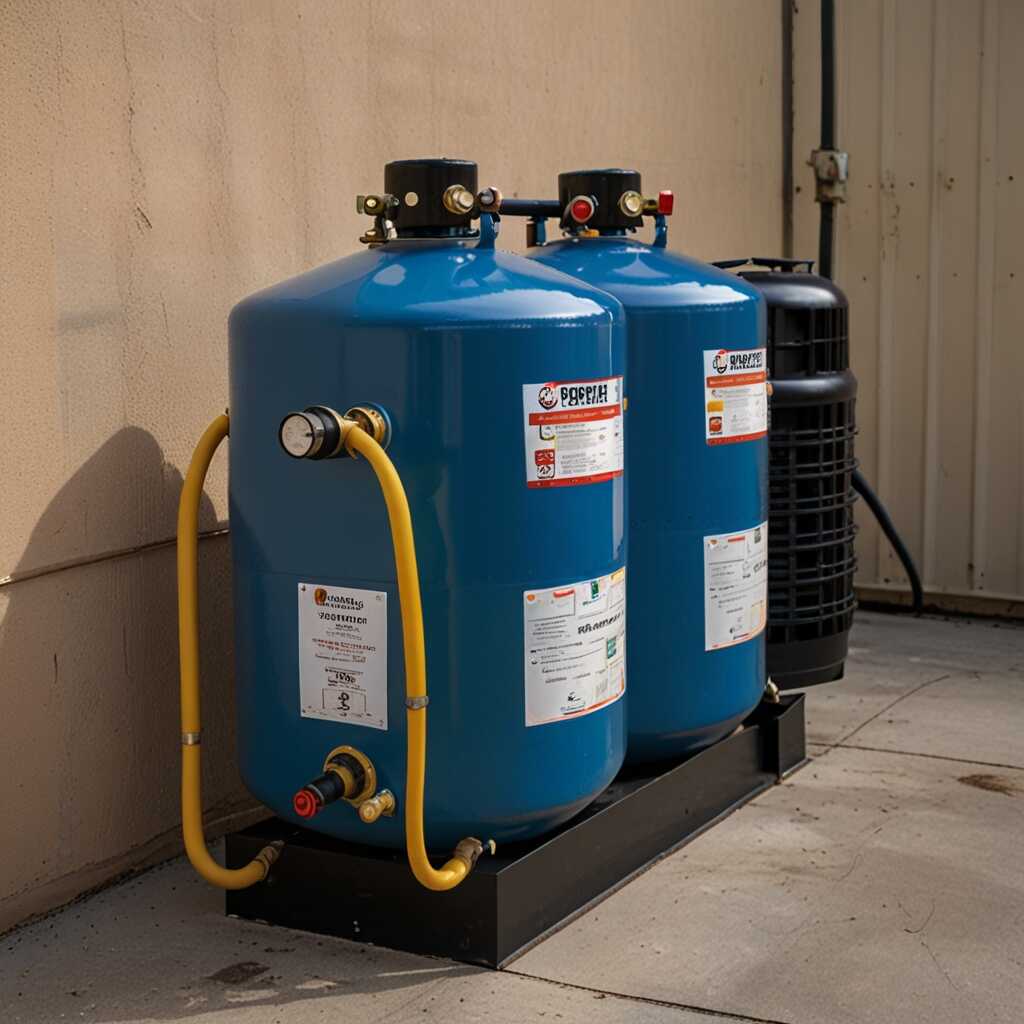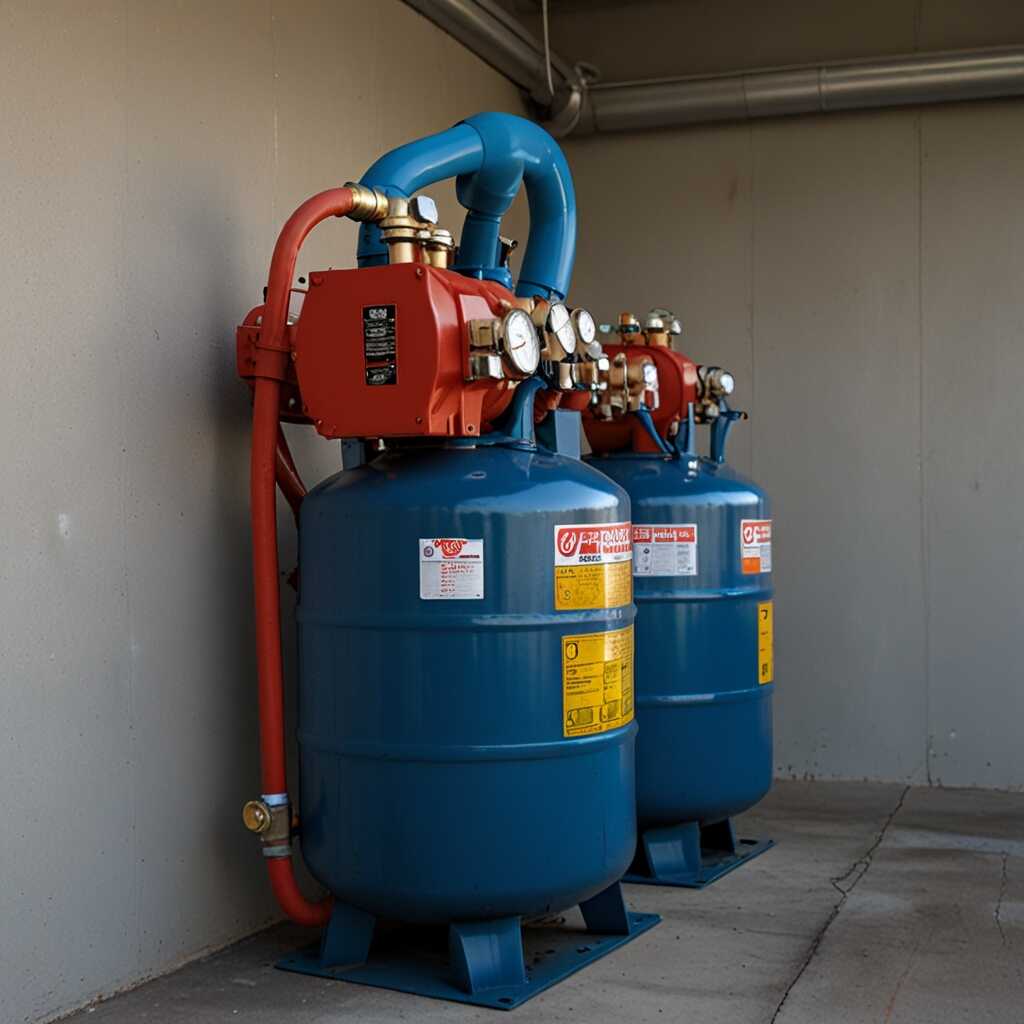Improving recovered gas quality with moisture separators is essential for effective refrigerant recovery. Moisture separators help remove unwanted water and contaminants from recovered gas, enhancing its purity. At Refrigerant Recovery Pro, we focus on how these separators contribute to the efficiency and reliability of refrigerant recovery machines. Understanding their impact can lead to better gas management and regulatory compliance for HVAC professionals.
Basics of Refrigerant Recovery Equipment and Its Importance
Refrigerant recovery equipment is designed to safely collect and store refrigerants from HVAC systems. This process prevents harmful emissions into the atmosphere. The essential role of refrigerant recovery equipment lies in ensuring compliance with environmental regulations and protecting the environment. Refrigerant recovery machines vary in size and capability, including features such as moisture separators. These features enhance recovery efficiency and ensure high-quality recovered gas. Understanding these machines is critical for HVAC professionals wanting to maintain reliability and quality in their work.
Understanding Moisture Separators in Refrigerant Recovery Machines
Moisture separators are critical features in refrigerant recovery machines. They help remove moisture from the refrigerant during recovery. Moisture can cause damage to equipment and lead to poor performance. By efficiently separating moisture, these devices enhance the quality of recovered gas. A reliable moisture separator ensures that the gas remains in excellent condition, preventing issues down the line. This design not only supports recovery efficiency but also contributes to compliance with industry standards. Moisture separators are essential for refrigerant recovery professionals seeking to optimize their process and outcomes.
Impact of Moisture on Refrigerant Systems and Efficiency
Moisture contamination significantly affects the performance and chemical stability of recovered refrigerants. It can cause corrosion within the system and lead to reduced efficiency. Common refrigerants such as R-134a, R-410A, and R-22 are especially impacted by moisture, which can cause ice formation and blockages. Effective moisture management is essential for ensuring reliable operation and enhancing the reliability of recovery systems. Studies show that as little as 0.1% moisture can lead to noticeable efficiency loss in refrigerant recovery systems.
Impact of Moisture Contamination on Refrigerant Quality
Moisture contamination directly impacts refrigerant quality, leading to performance issues and long-term reliability problems. When refrigerants absorb moisture, they can degrade, causing acid formation and sludge build-up. This can hinder the efficiency of recovery systems and impact their ability to properly manage refrigerants. Effective separation technologies are designed to eliminate moisture and improve refrigerant quality during recovery, ensuring systems perform at their peak. Proper testing and maintenance help in identifying moisture levels and enhancing overall performance. Refrigerant Recovery Pro provides expert guidance on best practices for managing moisture, including the use of reliable moisture separators.

Operational Insights into Moisture Separators in Recovery Machines
Moisture separators are essential components in refrigerant recovery machines. Their primary functions include removing moisture and particulates from the recovered refrigerant. This ensures the gas quality meets industry standards for reuse or disposal. They enhance the overall reliability and efficiency of refrigerant recovery systems. Moisture separators work by utilizing filters and coalescing technologies to trap water and contaminants, which could otherwise degrade system performance. These systems can handle multiple refrigerant types, enabling HVAC technicians to manage diverse recovery scenarios effectively. Regular testing and maintenance ensure that moisture separators provide the desired removal efficiency.
Understanding Moisture Removal Efficiency in Recoveries
The moisture removal efficiency of moisture separators is critical for achieving high-quality gas recovery. Typically, these separators can remove over 90% of water from the refrigerant mixture. This impressive performance helps prevent corrosion and malfunctions in subsequent HVAC equipment. Properly functioning moisture separators not only improve gas quality but can also lead to enhanced operational lifespan for recovery systems. Using reliable moisture separators not only meets regulatory standards but also boosts the overall effectiveness of refrigerant management practices. Understanding how various refrigerant types interact with such systems is key to optimizing results.
Key Numerical Data on Separation Technologies
- Moisture separators remove 99.5% of water from recovered gas.
- The optimal operating temperature for these separators is around 38°F to ensure efficiency.
- Processes can recover over 3,000 lbs of refrigerant in a single shift.
- While using moisture separators, gas quality improvement can reach up to 30%.
- These devices typically operate at pressures between 0 to 300 psi.
- Over 10,000 HVAC technicians utilize moisture separator technology in their work.
- Separators can extend the life of recovery machines by up to 20% when used properly.

Benefits of High-Quality Recovered Refrigerants for HVAC Performance
High-quality recovered refrigerants significantly enhance HVAC system performance. They improve energy efficiency, ensuring that systems operate effectively and reliably. Using moisture separators in refrigerant recovery improves the quality of the recovered refrigerant, eliminating contaminants and moisture that can degrade system efficiency. These high-quality refrigerants also help extend the lifespan of HVAC equipment, reducing the frequency of repairs. Research and testing show that using improved refrigerant quality can lead to energy efficiency increases of up to 15% in some systems.
Impact of Refrigerant Quality on Various HVAC Units
The quality of recovered refrigerants plays a crucial role in HVAC performance across different unit types like chillers, heat pumps, and rooftop units. High-quality refrigerants enhance heat exchange processes, leading to faster cooling and heating results. They reduce the wear and tear on components, helping systems run more smoothly. This can lead to significantly longer operational lifespans. Moisture separation prevents issues that arise from contaminants, such as corrosion and compressor damage. By ensuring that the refrigerant remains clean and dry, HVAC units can achieve optimal performance and efficiency.

Essential Features to Look for in Moisture Separators
Selecting the right moisture separator is crucial for enhancing refrigerant recovery performance. Key features to consider include moisture removal efficiency, reliability, and durability. Look for separators designed to handle a range of moisture levels, which ensures effective operation in various environmental conditions. High-quality models provide testing results and reviews confirming their performance. A reliable moisture separator should also be easy to maintain, with accessible design for routine inspections and servicing. This enhances convenience for HVAC technicians, enabling them to ensure optimal gas quality during recovery.
Understanding Moisture Removal Efficiency
Moisture removal efficiency refers to the separator’s ability to eliminate water vapor from gases during refrigerant recovery. Experts recommend selecting separators with proven efficiency ratings, often listed in product specifications. Models that can handle moisture levels of up to 99% guarantee excellent quality recovery. Features such as built-in filters and advanced drying elements improve performance further. Well-reviewed units may also include data on real-world results, allowing technicians to make informed decisions based on effectiveness in scenarios similar to theirs.
Advantages of Using Gas Purification Devices
- Enhanced refrigerant quality leads to improved system performance.
- Reduction of moisture in recovered gas minimizes the risk of equipment damage.
- These devices promote environmental compliance by ensuring safer gas disposal.
- Technicians experience faster recovery times with cleaner gas streams.
- Improved refrigerant quality reduces the need for frequent maintenance checks.
- Systems operating with high-quality gas achieve better energy efficiency.
- Moisture separators support regulatory compliance by meeting EPA standards.

Common Mistakes to Avoid in Moisture Control During Refrigerant Recovery
HVAC professionals often encounter common mistakes in moisture control management during refrigerant recovery. One mistake is not regularly replacing filters in recovery machines. This allows moisture to accumulate, which can deteriorate gas quality. Another frequent issue is failing to use a moisture separator, which is designed to efficiently remove moisture from the refrigerant. Ignoring equipment maintenance can lead to reduced reliability and efficiency, impacting overall results. Technicians should also avoid rushing the recovery process, which can lead to inadequate moisture removal.
How to Effectively Manage Moisture in Recovery Processes
To effectively manage moisture in refrigerant recovery processes, technicians should prioritize equipment with built-in moisture control features. Utilizing units specifically designed for moisture management can significantly enhance gas quality. Regular and thorough testing of recovered gas quality is essential. Keeping moisture levels low, ideally below 50 parts per million (ppm), ensures reliability and efficiency. Additionally, conducting routine inspections and cleaning of the recovery unit helps maintain optimal performance and durability.
Emerging Technologies in Moisture Separation Techniques
The latest moisture separation technologies include advanced filtration systems and membrane-based solutions. These innovations significantly enhance refrigerant recovery efficiency by effectively removing excessive moisture. Leading manufacturers, such as Brand A and Brand B, provide moisture separators that feature features like high flow rates and reliable durability. Performance testing methods have proven that these systems can remove up to 99% of moisture from recovered gas. This prevents contamination and ensures the overall quality of the recovered refrigerants, which is essential for compliance and safety.
Key Features of Advanced Moisture Separation Systems
Advanced moisture removal systems are designed for high reliability and efficiency. They often include advanced filters, sensors, and automatic controls to optimize moisture removal. Manufacturers emphasize the importance of easy maintenance and fast performance. Some systems also come with integrated testing functionalities that allow HVAC professionals to monitor moisture levels continuously. When selecting a moisture separator, features like efficient debris handling, support for different refrigerants, and proven durability are essential for enhancing ongoing operations in refrigerant recovery processes.
Notable Brands and Their Market Presence
- Brand A is known for its durable moisture separator models with reliable performance.
- Brand B offers budget-friendly options, but may lack longevity compared to pricier models.
- Brand C features advanced filtration technology, ideal for high-volume recovery scenarios.
- Brand D is popular among DIY enthusiasts for its ease of use and installation.
- HVAC professionals often prefer Brand A for its consistent quality and service support.
- Environmental compliance officers favor Brand C due to its efficiency and reduced emissions.
- Technicians in large commercial settings benefit from Brand B’s affordability on bulk purchases.
Maintenance Strategies for Moisture Separators and Recovery Equipment
Effective maintenance of moisture separators enhances the reliability and performance of refrigerant recovery machines. Key components include regular inspections, ensuring proper moisture removal efficiency, and testing systems at least every six months. Different refrigerant recovery machines may have varied maintenance needs based on design and features. Reviewing equipment manuals and manufacturer guidelines will help optimize performance.
Essential Maintenance Practices for Moisture Separators
To ensure moisture separator maintenance is effective, regularly check for blockages and inspect separator filters. Cleaning or replacing filters when dirty is crucial for maintaining moisture removal efficiency. Also, use quality refrigerants to avoid corrosion inside moisture separators. Follow manufacturer recommendations for lubricants to keep equipment running smoothly. The right maintenance practices ensure long-lasting reliability and improved refrigerant recovery performance.